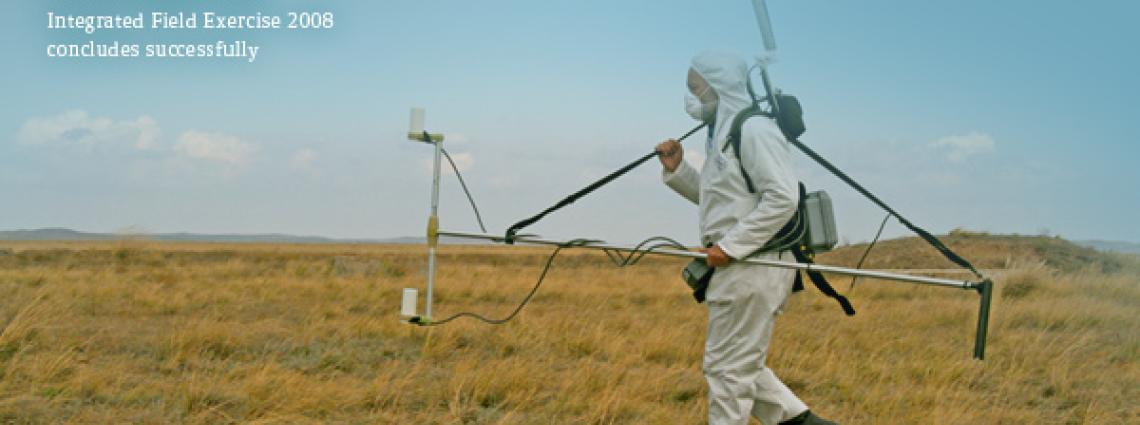Integrated Field Exercise 2008 concludes successfully
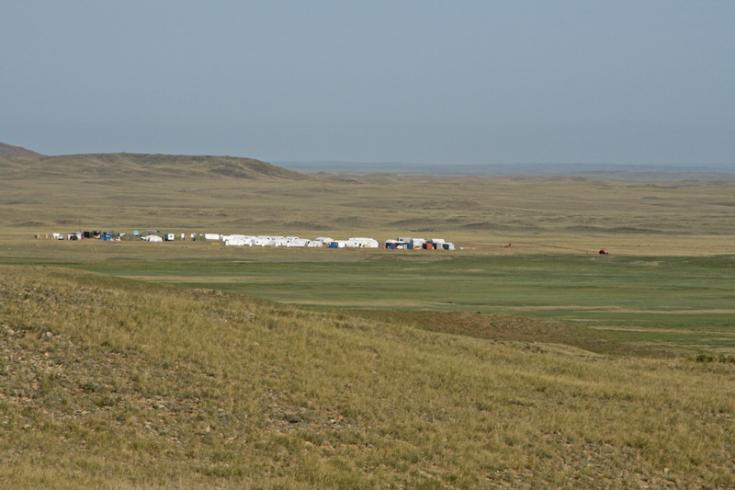
The CTBTO integrated on–site inspection exercise took place at the former Soviet Union nuclear test site Semipalatinsk.
Exercise ends without evidence of nuclear explosion

First phase ended with need for continued inspection
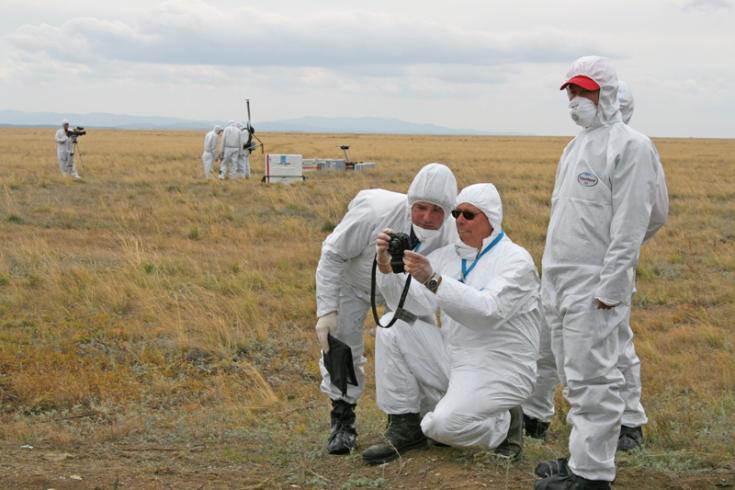
Visual observation was performed during the entire exercise.
More intrusive techniques during second inspection period
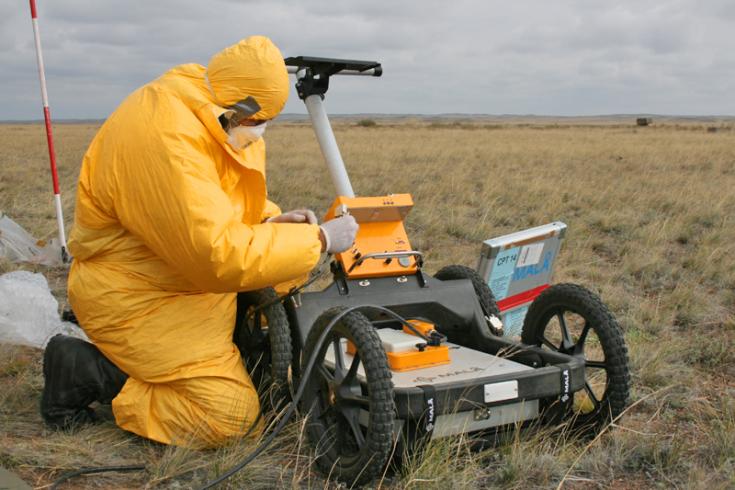
The ground penetrating radar is prepared for use during the second inspection period.
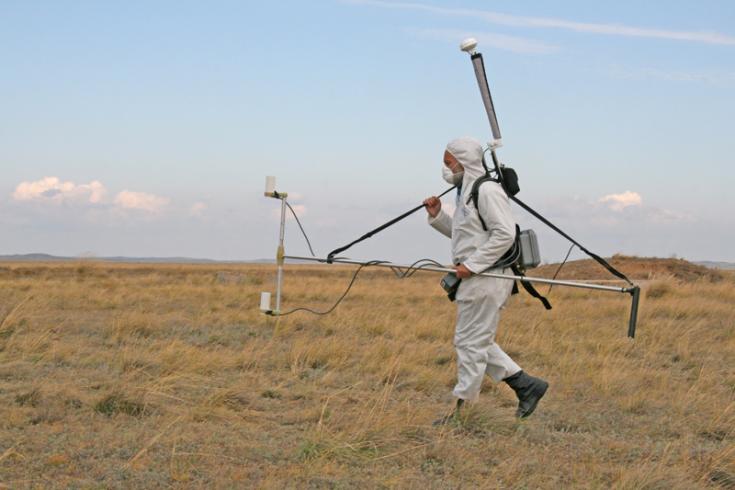
Hand-held magnetometers are used during the second inspection period.
Different techniques to examine shallow and deep layers of the ground
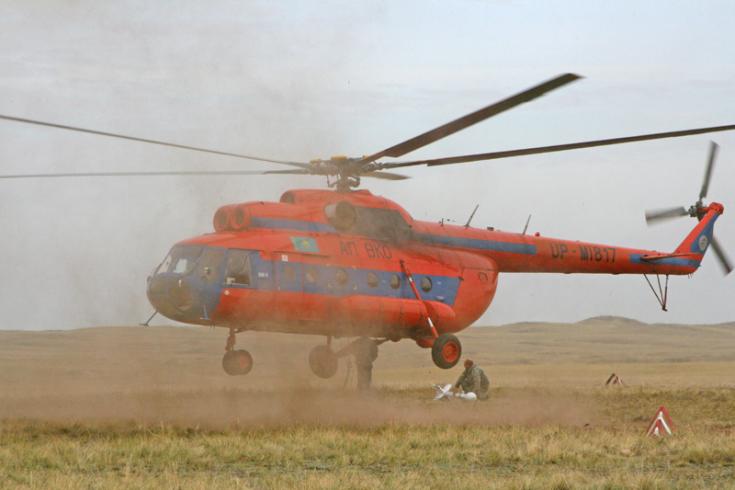
Magnetic field measurements for most of the inspection area are obtained with a so-called mag bird tied to a helicopter.
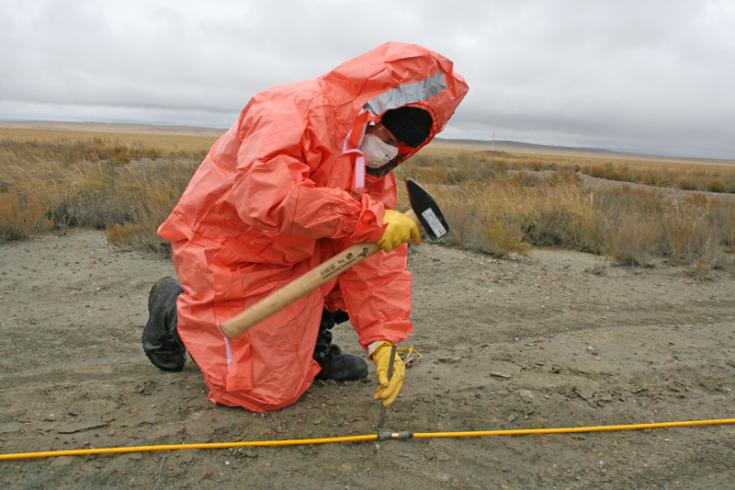
An inspector positions electrodes for shallow electrical conductivity measurements.

Inspectors identified evidence of older nuclear explosions
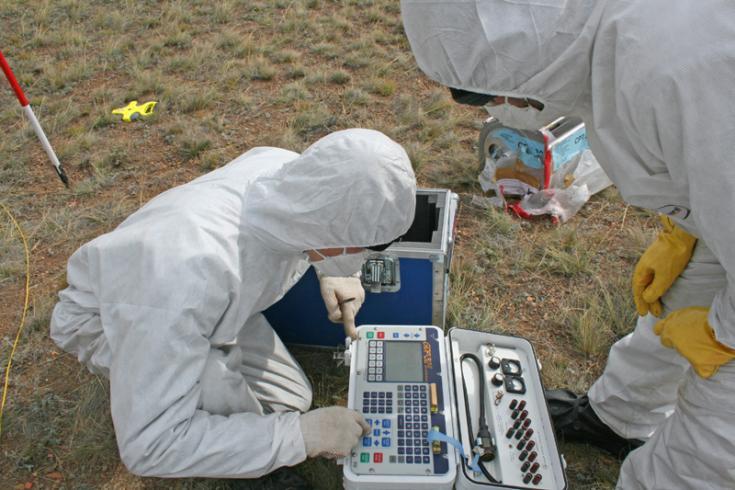
For measurements in greater depths, inspectors induce an artificial magnetic field.
Continued use of first period techniques
First ever Argon sampling
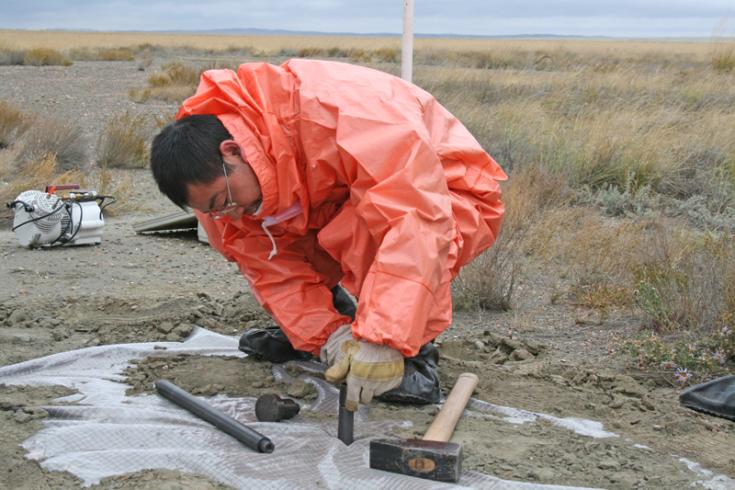
Air sampling for the detection of the noble gas Argon was performed for the first time.
Preliminary report concludes exercise activities
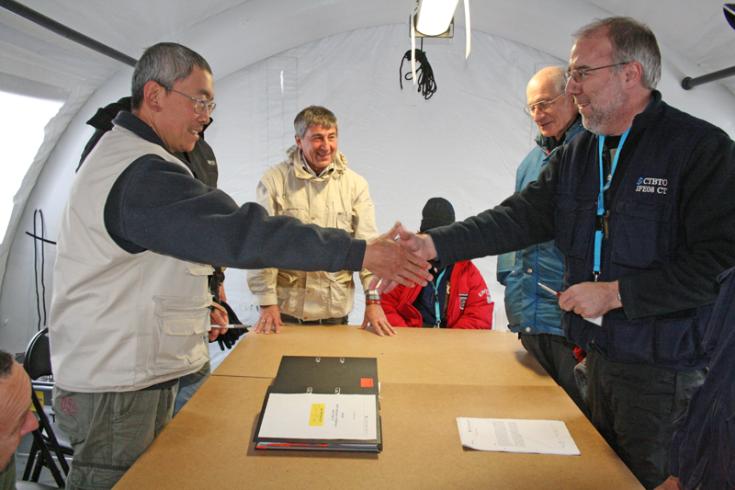
The hand-over of the preliminary findings marked the end of the inspection simulation.

Game over
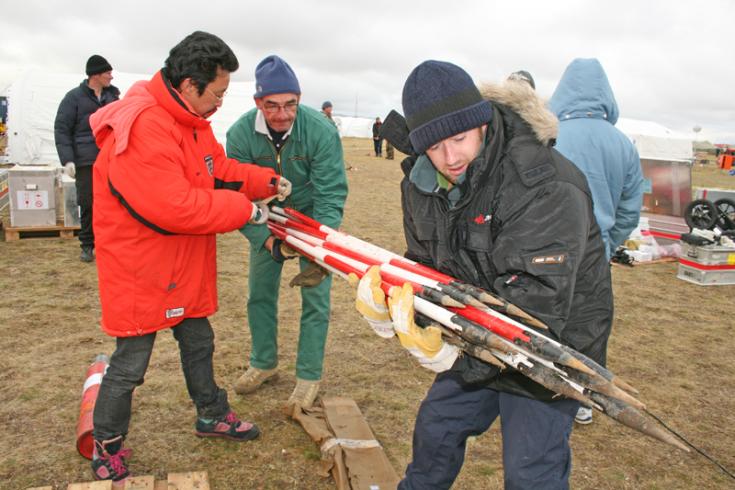
All exercise participants helped in taking down the camp.
Taking stock
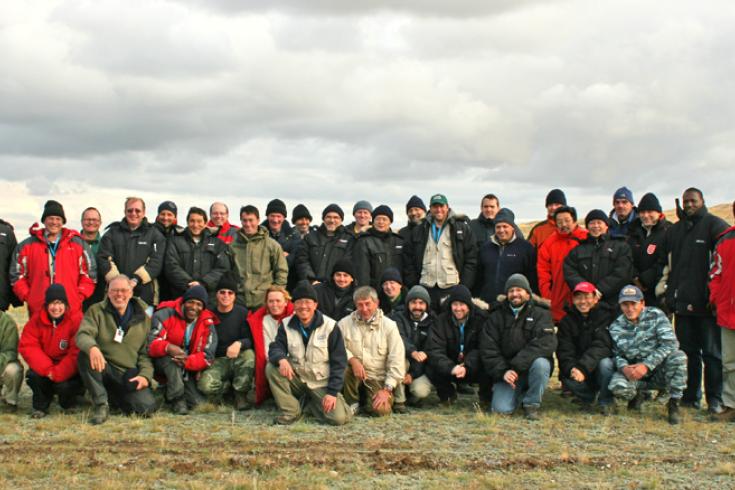
The IFE08 inspection team.
Analysis process only just started
More proof of Treaty’s verifiability
8 Oct 2008
